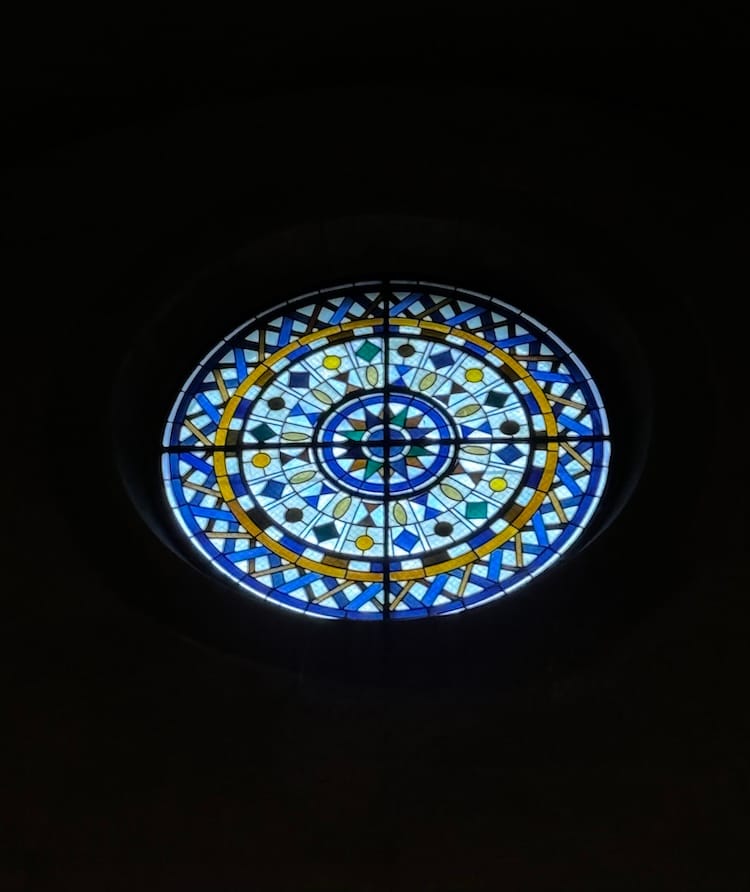Back to Basics

Friday, 20 December
With all the fanfare around the re-opening of Notre Dame, I rode my bike over there two days after the star-studded ceremony and virtual visit that I'd missed on tv to see her makeover for myself.
Silly me. The entire parvis was still cordoned off with swarms of people buzzing around the barriers. My phone informed me that excess demand meant I would need a QR code and much patience, not to mention luck, to gain access to the hive.
By now the barriers are gone and those who have been admitted so far - including the most hardened atheists - report that the renovated cathedral takes the breath away, causes the heart to soar to the top of the whitened stone pillars and thump against the newly vaulted ceiling.
No one could be happier than I that she, the heart of our city, is back. I am grateful to the brave firemen who saved her from burning to the ground, to France's talented, devoted artisans who restored her and to the 340,000 individuals who gave 846 million euros ($877m). With the French state on the rocks, it was right that the country's wealthiest families, the Arnaults and the Pinaults and the Bettancourts, stepped up and dug deep into their cavernous pockets for the cause of Our Lady, even if some of that giving was ego-based.
There was a lot of bling around the whole business, enough to lure the likes of Donald Trump and his current bestie Elon Musk through her portals.

After my failure to enter that day, I opted for a less crowded and ostentatious experience just steps away.

The tiny Left Bank Saint-Julien-le-Pauvre is nestled in the shadow of Notre Dame, at the far end of a small square. Approaching its squat, humble form, you might be entering a village. Or a Paris of centuries ago. Indeed not that much has changed, including the continued survival of the city's oldest tree, a Robinier pseudoacacia planted by and named for Henri IV's gardener Jean Robin who'd somehow obtained a black locust seed from Appalachia in 1601 - 19 years before the Mayflower sailed.

Saint-Julien-le-Pauvre is the smallest church in Paris (if you don’t count the wooden Russian Orthodox Saint-Seraphin-de-Sarov tucked away in the 15th arrondissement) and one of the oldest.

As you can see, no hordes here, just the serene, reflective vibe that churches can communicate even to the non-believer. You don't need the flashier kaleidoscopics of Notre Dame's rosette window to feel enlightened.

Once upon a time it was a buzzier place. Situated at the crossroads of two major roads, one to Orléans (rue Saint-Jacques) and the other to Lyon (rue Galande), the original edifice, largely destroyed in 886 by the Vikings, was the chapel for a hospice that welcomed and housed pilgrims.
Hard as it may be to believe, the Saint-Julien-le-Pauvre that was built on the foundations of the chapel is Notre Dame's sibling, the former constructed between 1170-1240, the latter between 1161-1250. Both straddle Romanesque and Gothic architecture, but unlike Notre Dame's strong Gothic pull upwards, St-Julien's rounder, stouter bearing is more anchored in the Romanesque, with Gothic touches such as buttresses (not flying) and intermittent vaulted arches (not in the nave). The choir ceiling that you see in the above interior photo is in fact a mini-version of Notre Dame's. And of course unlike her brother Saint-Julien who never even got a bell in his tower, Our Lady continued to grow over the centuries, culminating in the 19th with Viollet-le-Duc's spire that was reconstructed to the original design after the fire (glimpse in top photo).

Several sainted Juliens vie for the title of namesake, but Saint-Julien-le-Hospitalier's tale, as retold and embellished by Flaubert in his Trois Contes, is the most compelling and cautionary. This Julien, born into great privilege, was a sadistic hunter until one day his prey, a deer, spoke to him: “Cursed! Cursed! Cursed! One day you, ferocious heart, will assassinate your mother and father.” A prophecy that came to pass and caused Julien to embrace a life of denial and charity with the same zeal he'd devoted to killing animals. After countless good deeds and deprivations, he was crossing a river with a leper one day when midway his fellow passenger grew a halo. It was Christ, who had descended from heaven to forgive Julien his sins and anoint him.

Like Julien, the church has had its ups and downs. In the 13th and 14th centuries, it was the heart and soul of the University. Luminaries such as Saint Augustin, Dante and Petrarch (take that Notre Dame!) prayed at its altar.
But in the 17th century when Cardinal Richelieu moved the Uni to the Mont Sainte-Geneviève, the current site of the Sorbonne, Saint-Julien lost its status and even part of its façade.

Deconsecrated during the French Revolution, it became a salt cellar, then a warehouse for wool, before regaining some dignity as the chapel for the Hôtel Dieu hospital. In 1889, the Greek Melkite Catholics (Catholics who follow Orthodox rituals) took charge and still run the church today.
From the quiet aisles of Saint-Julien-le-Pauvre, all the money and power that congregated the other night at Notre Dame seemed very loud, another sign that the billionaires are pulling all the strings, attracting all the attention and bedazzling the world for all the wrong reasons. It's not Notre Dame's fault, but we do seem to be drifting further and further away from the basics, the simple things that money cannot buy.

So here's wishing you some of those intangibles during this festive season. Bonne fêtes à Toutes et à Tous.
You can visit my website here and follow me on Instagram here